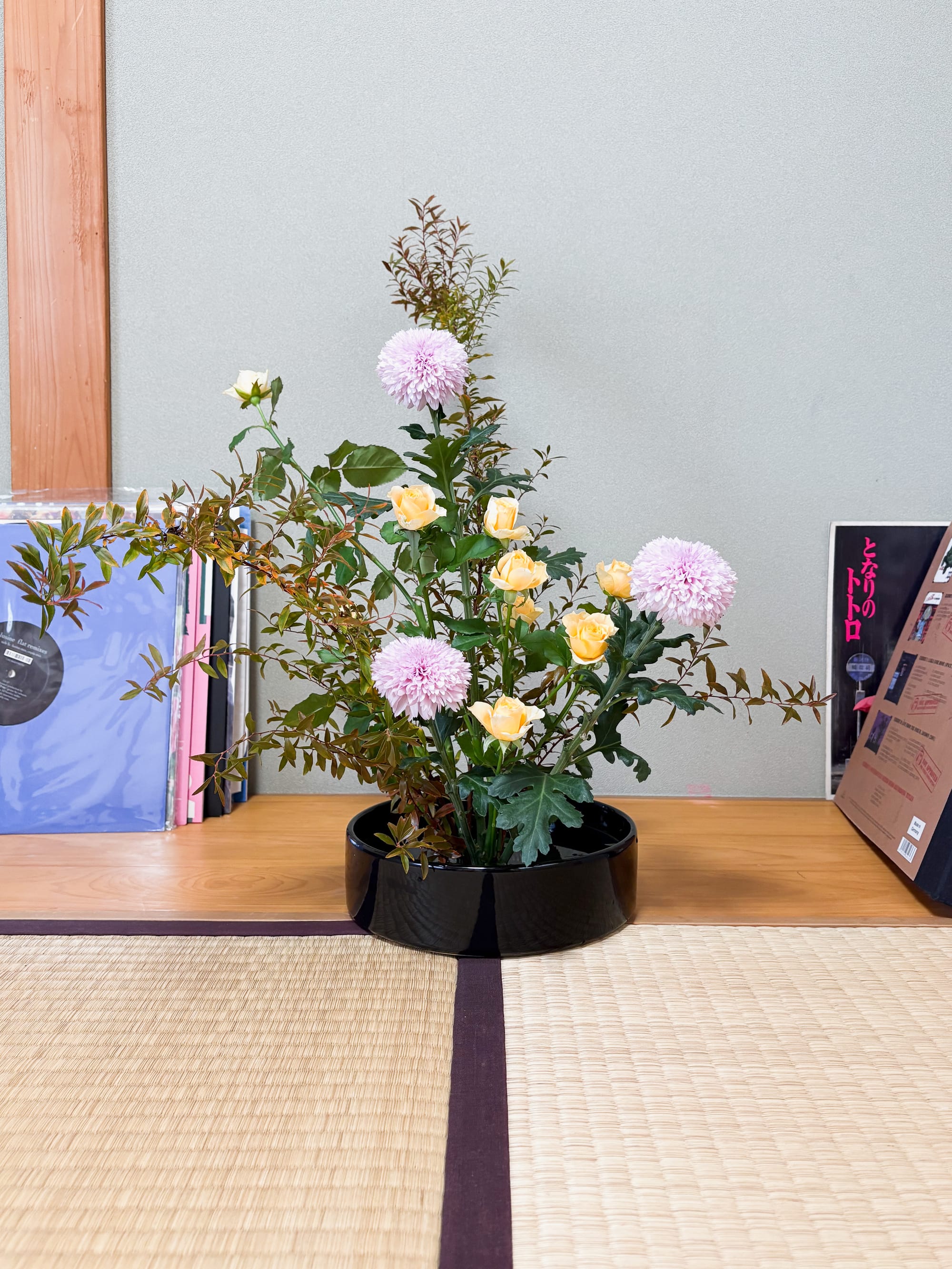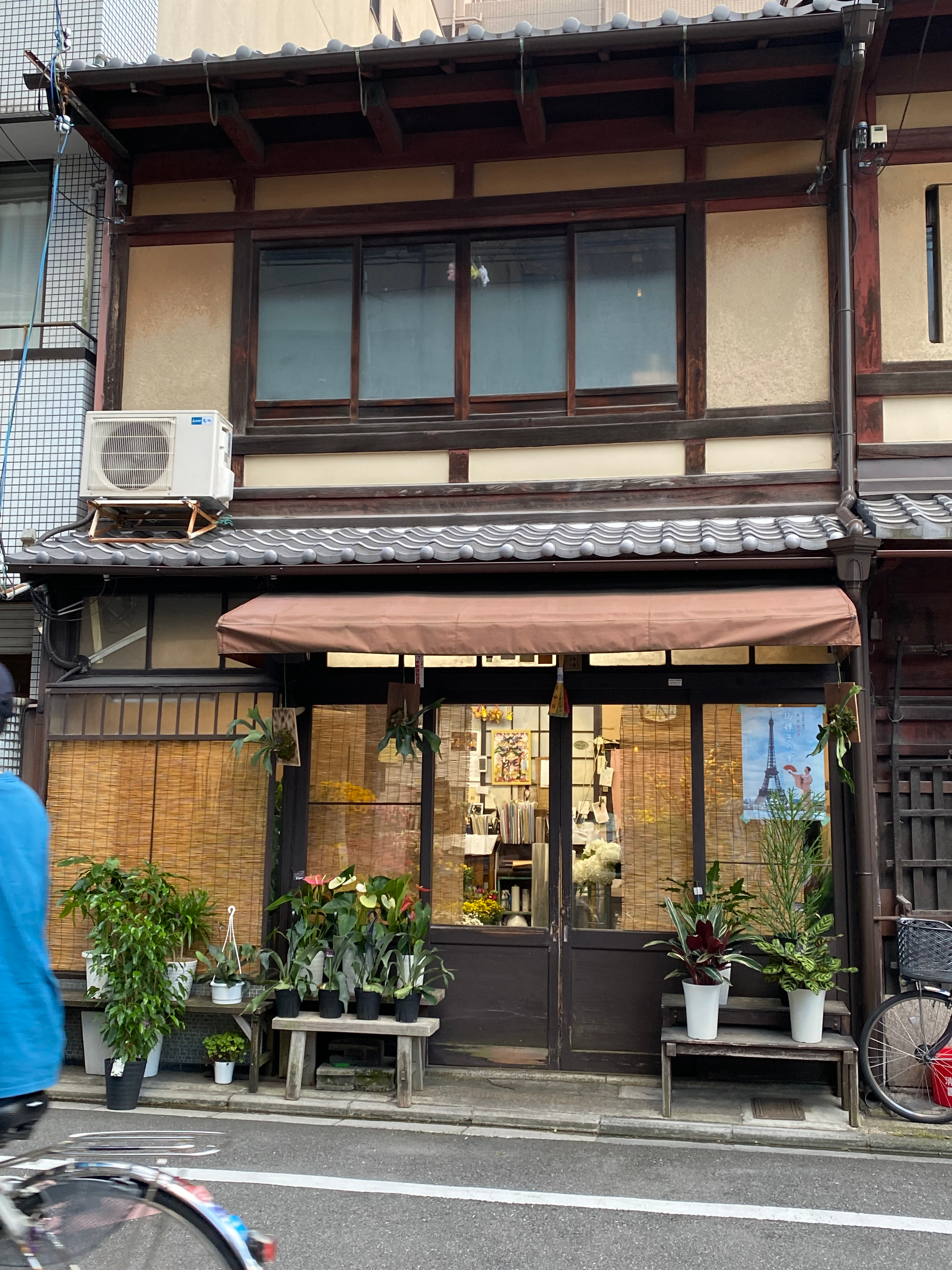Ikebana for Autumn in Kyoto’s Peak Foliage
Learn ikebana with simple step-by-step autumn ideas from Kyoto, including using Willow and Chrysanthemum in your arrangements.

Hello flower lovers,
Autumn has arrived in Kyoto, and everywhere I walk I feel the season settling in. The colors are deep and warm, and it is the perfect moment to enjoy simple ikebana at home.
Last weekend, a customer asked for something easy to display in her living room. She was not sure how to arrange flowers by herself, so I suggested two tall autumn willow branches. They express the season beautifully, and even beginners can create something elegant with them.
We found a clear cylinder vase since she did not have a tall one at home. I showed her how to place one branch a little taller and one slightly shorter. The shape looked modern, calm, and effortless. She went home excited to try it for herself.

Displaying flowers does not need to feel complicated. If you ask your florist, they can guide you toward simple seasonal branches that look beautiful with very little adjustment. Even a small arrangement can refresh your space and bring a gentle moment of calm.
A Sunday Morning Conversation at Kyoto’s Oldest Flower Shop
Kyoto is at its most vivid in autumn. The deep reds of momiji (Japanese maple) trees brighten the quiet streets. When I walk through my neighborhood, I see shops decorating their entrances with seasonal branches. These small details bring a warm feeling to everyday life.
On a recent Sunday morning, I visited a flower shop established in 1861. It was already lively when I arrived. Staff members were preparing flowers for local ikebana classes, and the refrigerators were full of year-end florals. In a corner, a tall pile of autumn branches reminded me of the flower markets I used to visit in New York.
Most staff were heading out for deliveries, so only one woman remained at the counter. She was in her 60s, calm and friendly. As she prepared my order, she asked if I was joining an exhibition. I told her that the flowers were for my own ikebana practice.
She shared something that stayed with me. She told me that fewer young people in Japan learn ikebana now. When she was growing up, ikebana and tea ceremony were taught in school, especially to girls. Many women became housewives and learned sewing, cooking, and traditional arts as part of everyday life. Today, she said, young people work long hours and rarely have time to learn these traditions.
Her voice carried both sadness and hope. She said she felt happy knowing I practice and teach ikebana. Her words made me realize that what I had sensed in my own school is happening everywhere in Japan. The number of practitioners is slowly decreasing.

In New York, ikebana felt so alive. Workshops were full of curiosity and excitement. Here in Japan, the birthplace of ikebana, the art is quietly aging. This conversation made me reflect on what it means to continue learning deeply and to share this beauty with others. Tradition survives only when someone chooses to care for it.
This week, paid members can continue below for the following content:
- A gentle introduction to the meaning of Ma (間: space)
- Step-by-step instructions for this week’s willow and chrysanthemum arrangement
